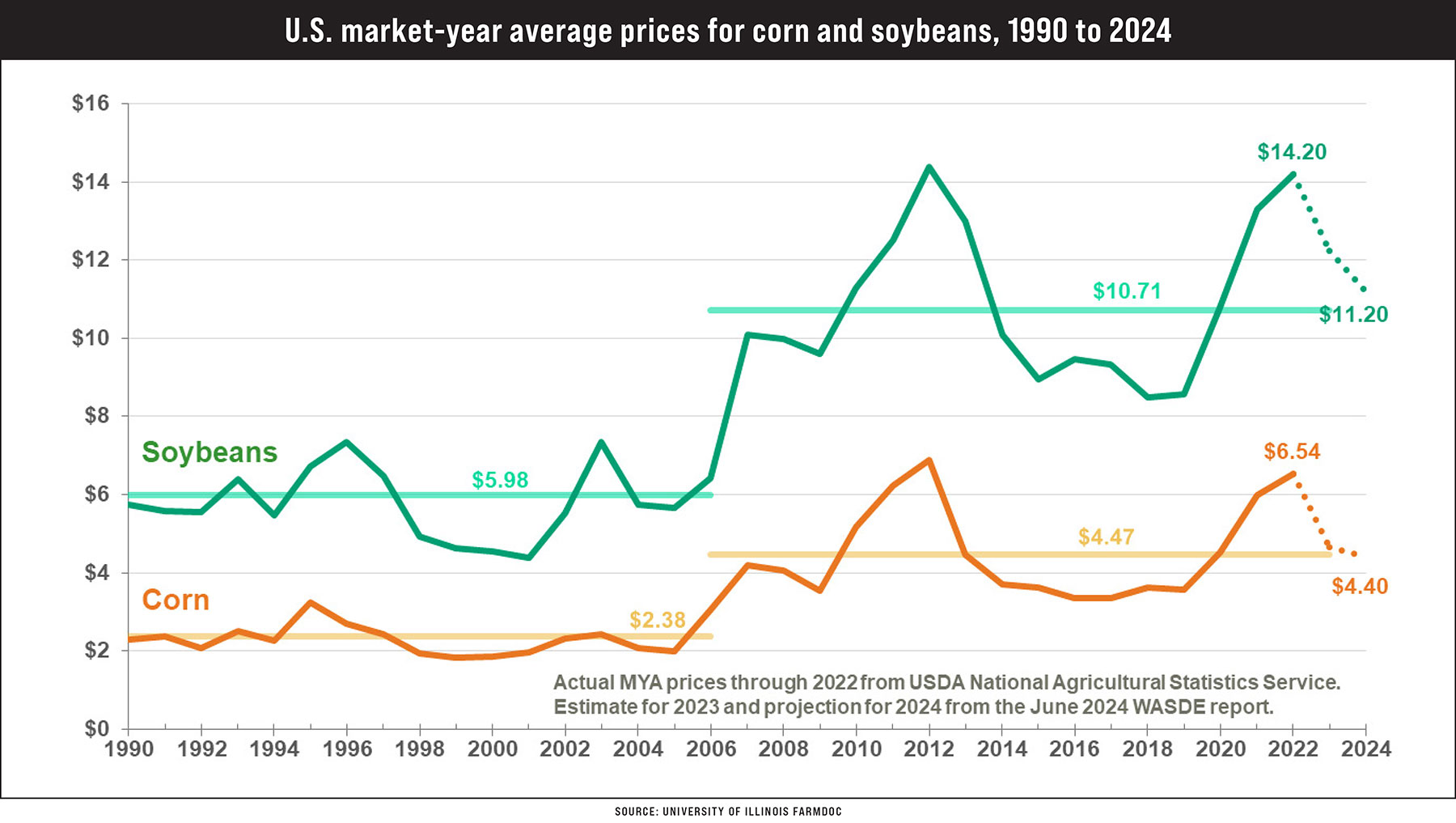Walk into enough farm offices and you’ll pick up on a pattern. An adding machine on the desk. A clock on the wall from their favorite seed company. Brown wooden plaques with brass plates, for committees they’ve chaired and awards they’ve won. Beautiful photos of beautiful families.
Maybe a Cubs or Cardinals or Illini sign. A dusty hat or two. 60/40 chance of brown paneling on the wall.
And among the very best, you’ll see binders and binders of Illinois Farm Business Farm Management records — every one of them full of data.
I stood in an office like that recently, on Chris Hausman’s farm near Pesotum, Ill. Hausman is a 2024 Prairie Farmer Master Farmer, and part of what earned him that designation is his commitment to financial management.
Hausman built his operation on timely and accurate records, both cash and accrual basis. And those binders of FBFM records — high on a shelf in his office — are a testament to steadfast record-keeping and a desire to know how he stacks up against other operations in the state.
“I focus on net farm income and study where my strengths and weaknesses are,” he says. “You have to avoid the pitfall of balance sheets where fair market values are inflated and accrued liabilities are underreported. Earnings are more important than assets.”
100 years of binders
Illinois FBFM hits a milestone this year: 100 years serving Illinois agriculture. That means FBFM field staff have tracked farm records, analyzed data, helped farmers make financial decisions and counseled them on management problems for every single crop since 1924.
From horses to horsepower, from sharecrops to cash rents, through the Great Depression and the ’80s farm crisis, hundreds of Illinois FBFM staff have tracked it all — starting in ledgers and now on computers. And today, they have the largest farm business data set in the U.S., gathered from 5,000 Illinois farmers, which means they can analyze historic data to generate future outcomes.
And that makes for better farmers.
Back in 1899, University of Illinois President Andrew Sloan Draper famously said, “The wealth of Illinois is in her soil, and her strength lies in its intelligent development.”
He wasn’t wrong. But I’d argue Illinois FBFM staff are the unsung heroes of that intelligent development.
The wealth of Illinois agriculture stems from its very educated farmer base.
Everything about the numbers — the management of the farm — tells the story of success and failure in agriculture. The farmers who’ve pushed numbers have been successful. They know their crop budgets and their costs of production.
Speaking of numbers
Scott Irwin recently made waves on Twitter when he pointed out the potential scale of financial losses for folks growing corn and soybeans in 2024. And he shared the newly revised crop budgets from his U of I ag economics colleagues Nick Paulson and Gary Schnitkey.

Figuring higher yields thanks to July rains, Irwin took 240-bushel corn at $3.70 and 75-bushel beans at $10.30. Without loan deficiency payment and crop insurance proceeds, that nets minus $244 per acre for corn and minus $98 per acre for soybeans. For farms with 50-50 rotations, that’s an average return on all acres of $171 per acre.
Crop insurance on 85% policies might kick in. Maybe. Regardless, Irwin says, “Alarm bells should be going off about the scale of potential corn and soybean losses for the 2024 crop in the Corn Belt.
“Right now, the losses look punishing due to the combination of rising expenses in recent years and the downdraft in corn and soybean prices. Corn losses could easily exceed $200 per acre.”
Of course, it’s not a done deal yet. The spigot could turn off, leaving a hot, dry second half of the growing season. Prices could rebound.

Don’t panic or look for a crisis; Midwest farmers built up sizable reserves and liquidity in 2021 and 2022.
“However, I don’t think very many envisioned how fast those reserves might be pulled down by the scale of losses this year,” Irwin says. “That is the big financial question in my mind that is raised by the grain price swoon this summer.”
In a lot of ways, good business decisions the past three years were easy. Just keep producing. Know your cost of production.
It’s always been a numbers game, but it’s a tighter one now. And nobody’s better at numbers than the Illinois FBFM folks and the farmers who work with them.
And the ones who know their numbers? They might be buying their neighbors’ farms in 10 years.
Comments? Email holly.spangler@farmprogress.com.